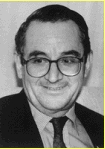 Notes on some selected topics for B.Sc.
and M.Sc. Chemistry students of M.G.University and other Universities in
Kerala.
Notes on some selected topics for B.Sc.
and M.Sc. Chemistry students of M.G.University and other Universities in
Kerala.
[All files are in the pdf format. You require Adobe
Acrobat Reader to view them]
Retrosynthetic analysis:
Professor E.J.Corey of Harward University has perfected the
technique of systematically analyzing the structures of complex organic
molecules and dissecting them into simpler structures that may be used as
probable starting materials for their synthesis. He was awarded Nobel Prize in
1990 for this work. This note is an introduction to this "backward synthesis”
or retrosynthetic thought process and explains the systematic steps involved in
designing the synthesis of complex organic molecules.
Additional reading
materials: Autobiography and Nobel lecture of
Prof. Elias J.Corey
Protecting Groups:
Protecting groups are very important
in organic synthesis. There are many occasions when a reagent, like an
oxidizing or a reducing agent, may attack several possible locations in a
molecule, but we may want the reaction to take place only at one of them.
Protecting groups are used to block other functional groups temporarily from
reacting, so that reaction may take place only at the desired location in the
molecule. This note is an introduction to CBZ, BOC, FMOC, trityl, benzyl,
tetrahydropyranyl, trialkylsilyl, t-butyl, acetal and thioacetal groups
frequently used to protect amino,
hydroxyl, thiol, carboxyl and carbonyl groups.
Some important synthetic reactions:
This note is an
introduction to special selective reactions like enol alkylation, Stork enamine alkylation and acylation, Mitsunobu
reaction, 1,3-dipolar cycloadditions, umpolungs, electrochemical reduction and
oxidation reactions, Prevost and Woodward hydroxylation reactions, de-oxygenation
of epoxides to alkenes and olefin metathesis.
These are reactions in which the concentrations of two species increase and decrease alternately for a long time before equilibrium is reached. It is hypothesised that many periodically varying biological phenomena such as breathing and heart beat may be controlled by oscillating chemical reactions. The notes provide a rudimentary introduction to the mechanism of such reactions. Watch an oscillating reaction!
Reaction dynamics in molecular beams. Rates of reactions, Hard sphere collision theory, glory scattering, rainbow scattering, collision cross section, reaction cross section, impact parameter, collision density, corrections for energy and orientation, pre-exponential factor, steric factor, calculations.
 Notes on some selected topics for B.Sc.
and M.Sc. Chemistry students of M.G.University and other Universities in
Kerala.
Notes on some selected topics for B.Sc.
and M.Sc. Chemistry students of M.G.University and other Universities in
Kerala.